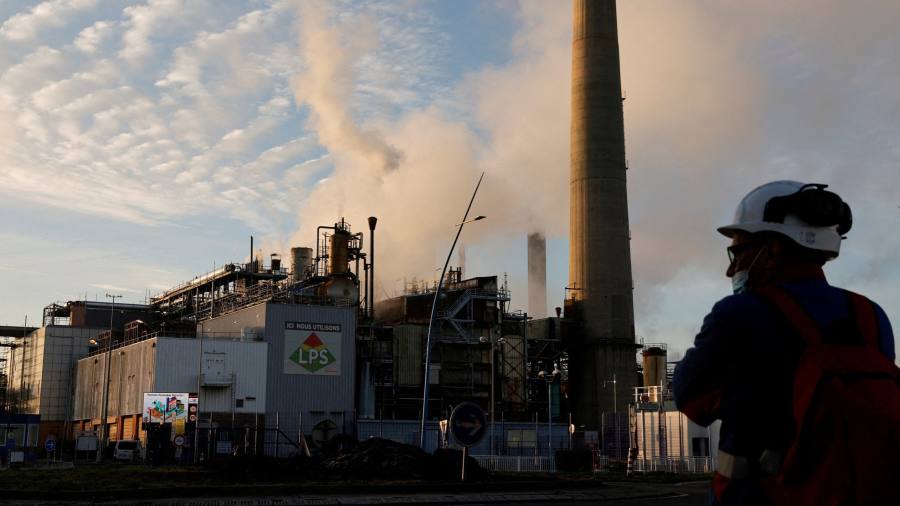
Eurozone industrial production fell more than expected in October, adding to signs the bloc is heading for a recession this winter and making it more likely the European Central Bank will opt for a smaller rise in interest rates this week.
The 2 per cent month-on-month drop in factory output across the single-currency bloc ended a period in which manufacturing growth had remained relatively resilient despite the impact of soaring energy prices caused by Russia’s invasion of Ukraine.
October’s decline was deeper than the 1.5 per cent drop expected by economists polled by Reuters, as more businesses scaled back production as a result of continued high gas and electricity prices and weaker demand. The fall took industrial output almost back to its level at the start of 2020 before the coronavirus pandemic hit Europe.
After a drop in eurozone retail sales in October, the industrial decline provides the ECB with more evidence that the economy is likely to start shrinking in the fourth quarter as its governing council meets in Frankfurt to set interest rates.
Melanie Debono, an economist at Pantheon Macroeconomics, said “general weakness” across European industry would provide “yet another reason” for the ECB to “pivot to smaller rate hikes” when its council meets on Thursday.
The central bank has responded to this year’s record rise in eurozone inflation with its most aggressive tightening cycle, lifting rates by a total of 2 percentage points in four months.
But signs that inflation has peaked — annual price rises fell from a record high of 10.6 per cent in October to 10 per cent in November — combined with mounting recession fears are likely to make policymakers more cautious. Most economists expect the ECB to raise its deposit rate by 0.5 percentage points to 2 per cent after two consecutive 0.75 point rises.
Higher gas and electricity prices have forced many of Europe’s energy-intensive companies, such as chemicals, metals, fertiliser and glass manufacturers, to cut or even close production in Europe and shift some operations to lower-cost regions.
Output in energy-intensive sectors fell 2.6 per cent in October, the sixth consecutive monthly drop, taking the decline since the start of the year to almost 10 per cent.
“The short-term outlook for industrial production looks bleak,” said Adrian Prettejohn, an economist at Capital Economics. “Manufacturers have previously been able to maintain production by reducing backlogs, but the drying up of new orders will hit production in the coming months.”
By sector, the biggest monthly drop was a 3.9 per cent decline in energy production, following strikes at French refineries, according to Eurostat, the EU’s statistics agency.
But there were also declines in the production of durable consumer goods, such as bicycles and fridges, intermediate goods, such as steel and sugar, and capital goods, such as machinery. Compared with a year earlier, overall industrial output was still up 3.4 per cent.
Factory production fell in the four main eurozone economies and only rose in four of the 15 others. Eurostat said the Irish statistics authority was reviewing its seasonal adjustment for industrial production in Ireland after it fell 10.7 per cent from the previous month. However, it was still up 53.2 per cent from a year earlier, reflecting transfer pricing between different units of large multinationals.